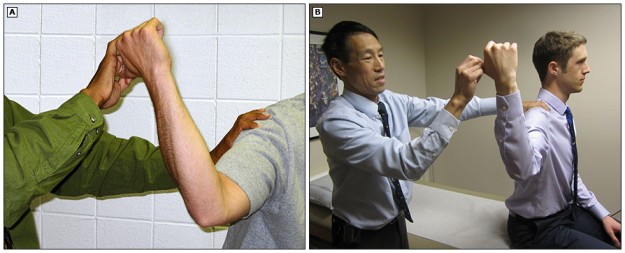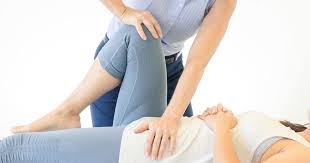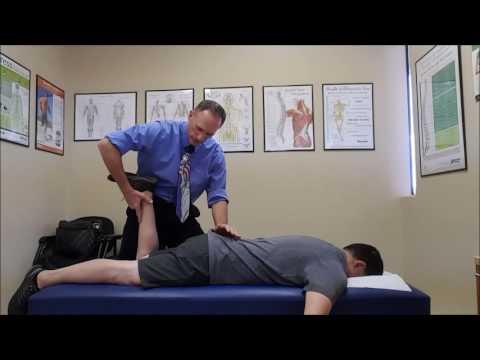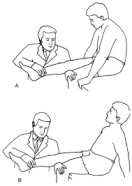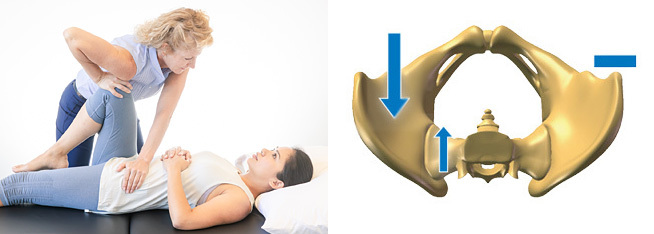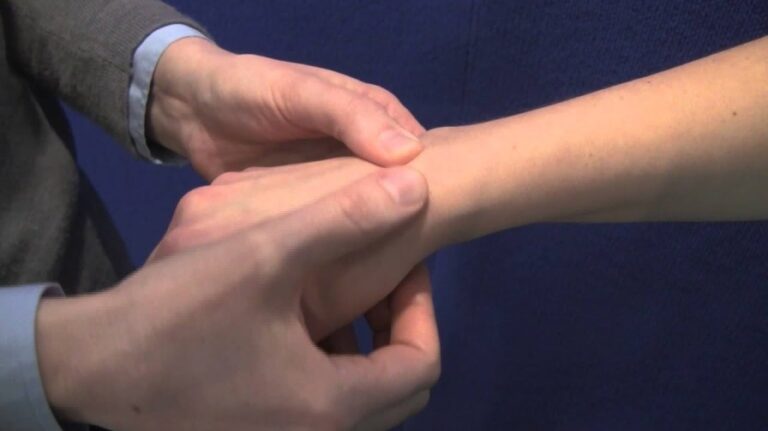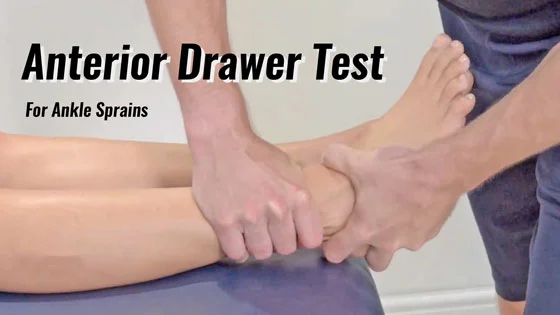Special test for the ligamentous instability of the elbow
- These tests are applied in the clinic used to check the ligamentous instability of the elbow.
- These tests are applied by to therapist when the patient complains about elbow pain.
- These tests are applied to examine part of the assessment.
Name of the special test for the ligamentous instability of the elbow
- Milking maneuver
- Moving valgus stress test
- Posterolateral rotary apprehension test
- Posterolateral rotary drawer test
- Push up test
- Stand up test
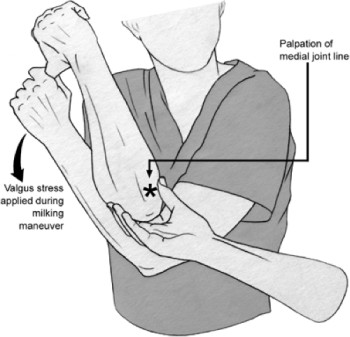
Milking maneuver
- Purpose = This test is used to check the partial tear medial collateral ligament.
- Technique = The patient sits with the elbow flexed to 90′ or more & the forearm supinated.
- The examiner grasps the patient’s thumb under the forearm & pulls it imparting valgus stress to the elbow.
- Result = Reproduction of symptoms indicates a positive test & a partial tear of the medial collateral ligament.
Modified test of the Milking Maneuver test
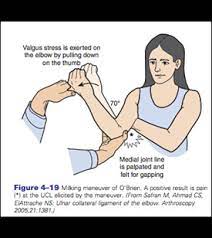
- The patient position for the test is in the standing/sitting position.
- The patient’s forearm is in a supinated position & the elbow is flexed up to 70 degrees with the shoulder joint adduction & externally rotated means lateral rotated.
- Then the examiner pulls the patient thump laterally & gives to elbow valgus stress.
- When the patient feels Pain, instability & apprehension, it indicates a positive sign of a test.
- After that do the Comparison between the contralateral side of the elbow.
Moving valgus stress test
- Purpose = This test is used to check the partial tear medial collateral ligament.
- Technique = The patient lies supine or stands with the arm abducted & elbow flexed fully.
- While maintaining valgus stress, the examiner quickly extended the patient’s elbow.
- Result = Reproduction of the patient’s pain between 120′ to 70′ indicates a positive test & a partial tear of the medial collateral ligament.
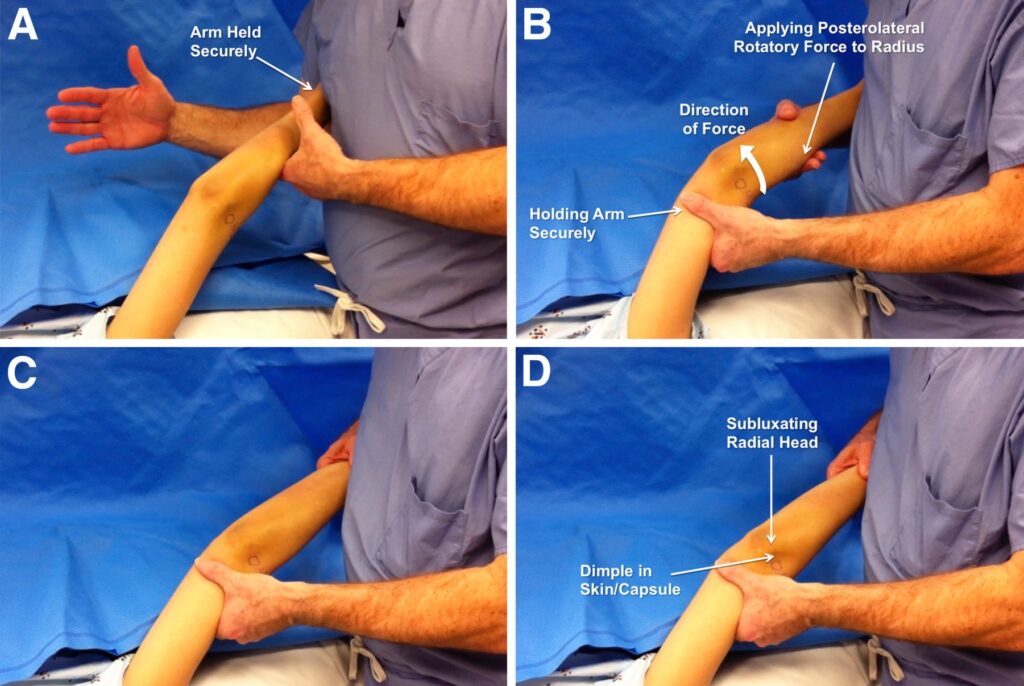
Posterolateral rotary apprehension test
- Purpose = This test is used to check the posterolateral rotary instability.
- Technique = The patient line supine with the arm to be tested overhead.
- The elbow is supinated at the wrist, & valgus stress is applied to the elbow while the examiner flexes the elbow.
- The movement between 20′ & 30′ flexion & stress cause the patient to be apprehensive that the elbow will dislocate while reproducing the patient’s symptoms.
- Result = In the conscious patient, actual subluxation is rare.
- A positive test indicates posterolateral rotary instability.
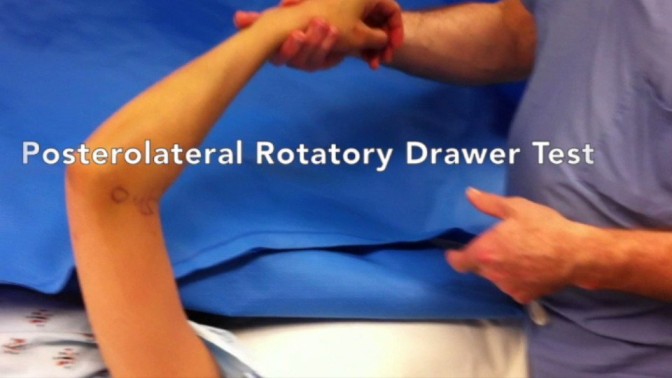
Posterolateral rotary drawer test
- Purpose = This test is used to check the posterolateral rotary instability at the elbow.
- This test also checks the tear of the lateral collateral ligament.
- Technique = The patient lies supine with the arm to be tested overhead & the elbow flexed 40′ to 90′ while the examiner holds the forearm& arm similar to doing a drawer test at the knee.
- Result As the humerus is stabilized & the radius & ulna are pushed posterolaterally, the radius & ulna rotate around intact medial collateral ligaments indicating a tear of the lateral collateral ligament & posterolateral instability at the joint.
Push up test
- Purpose = This test is used to check the posterolateral rotary instability.
- Technique = The patient, in supine attempts to do a pushup, first with the forearm maximally supinated & then repeated with the forearms maximally pronated.
- Result = The test is positive for posterolateral rotary instability if symptoms occur when the forearm is supinated but not pronated.
Stand up test
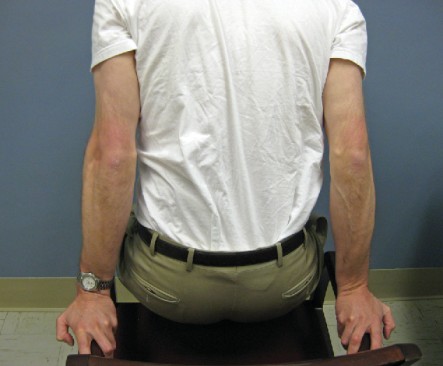
- Purpose = This test is used to check the injury of the posterior band of the medial collateral ligament
- Technique = The patient is seated in a chair without arms.
- The patient is asked to push up on the seat with his or her hands with the forearms fully supinated into standing.
- Result = If the patient’s symptoms are reproduced this test is positive for injury to the posterior band of the medial collateral ligament

